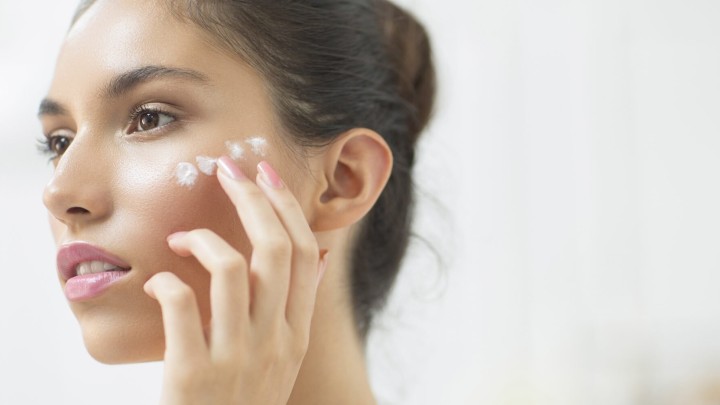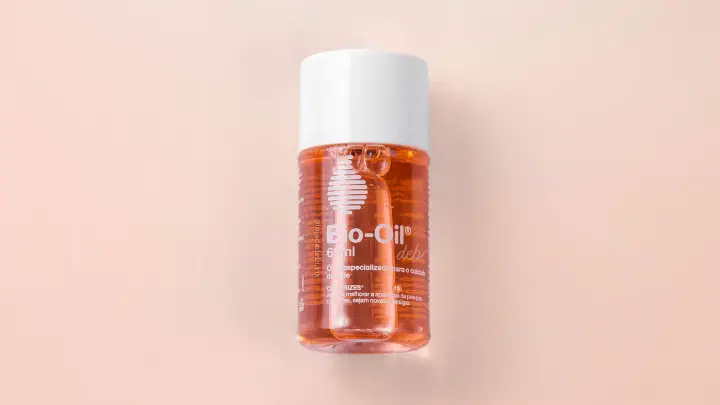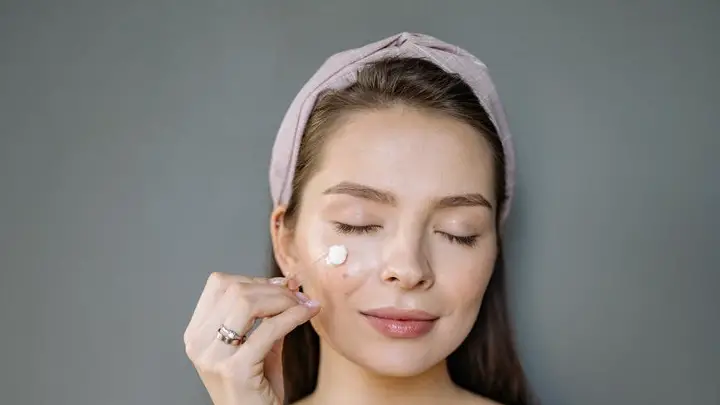Retinol is one of the most recognized active skincare ingredients in the top anti-aging products in the market today. It is a vitamin A derivative that is especially known for its ability to work wonders in the skin.
Every skincare wants to have it all—the ideal skin that is free from all forms of blemishes, and this may involve the use of more than just retinol on the skin. You can use it with other skincare ingredients, such as hyaluronic acid, and niacinamide.
If you have been wondering or considering the possibilities of using other skincare ingredients along with your retinol, you have found the right guide. Read ahead to find out if you can use retinol with your other favorite skincare ingredient(s), and how to use them together.
Can You Use Retinol With Other Ingredients?
Yes, you can mix or use it with other skincare ingredients. Using retinol with other skincare ingredients might be the key to the beauty boost you desire.
Every skincare lover wants to have it all—the ideal skin that is free from all forms of blemishes, and this may involve the use of more than just retinol on the skin.
However, before you go on to start layering different skincare ingredients on your skin, you have to be sure that the ingredients can work hand in hand for the improvement of your skin.
“It’s not just a waste of money, it is also a waste of time trying to mix skincare ingredients without knowing how each ingredient works and how well they interact when combined,” says Dr. Shari Marchbein, a board-certified dermatologist.
“Mixing ingredients without proper knowledge of each can lead to skin irritation if one combines two opposing ingredients,” Marchbein states further.
The first step to doing this is finding skincare ingredients that work well with it, and then proceeding to use the ingredients on your skin as directed.
According to a board-certified dermatologist and CEO of Curology, Dr. David Lortscher, “when combining ingredients in your skincare ingredients, choose ingredients that work well to complement one another, as this will help to avoid dryness and irritation on the skin.”
Another factor to consider when picking out skincare ingredients is your skin type. Ensure that the ingredients are suitable for your skin type as this will help to rescue the chances of side effects.
Can You Use Retinol With Vitamin C?
Vitamin C and retinol are active anti-aging agents and can work wonders on the skin. Using both vitamin C and retinol in your skincare routine will speedily improve the appearance of your skin.
Contrary to retinol, “Vitamin C safeguards the skin from damages caused by environmental aggressors. Therefore, it is best to use your vitamin C in the morning,” says Dr. Marchbein. As mentioned earlier, Retinol boosts collagen production to repair the skin, and they work best at night.
Since both ingredients thrive at different times of the day and have different functions in the body, it’s best to use them separately. Using both ingredients at once can irritate your skin greatly as they are both active ingredients.
According to Dr. Jason Emer, a Beverly Hills dermatologist says “I prefer to use vitamin C in the morning to glow up my skin and defend my body against environmental aggressors, and retinol comes into my night routine.”
How to Use Vitamin C and Retinol
Learning to layer these two active ingredients is important as applying them incorrectly can irritate your skin and can even cause serious side effects on your skin. You can incorporate vitamin C and retinol in your morning or evening skincare routine.
How to do it:
- Cleanse your face with a gentle facial cleanser that works for your skin type, and apply your facial toner.
- Apply your vitamin C product to your face.
- Allow your skin to absorb it properly for about 15 minutes.
- Once your face is completely dry, apply your retinol product.
- Allow your skin to absorb it completely, then finish up the process by applying your favorite moisturizer to lock in hydration on your skin.
It is best to use these two ingredients separately on the skin, as this will help to prevent them from irritating your skin, and this would give the ingredients more time to work on your skin.
Since both ingredients thrive at different times of the day and have different functions in the body, it’s best to use them separately.
- You can do it by using vitamin C in the morning and retinol at night. Vitamin C works best on the skin in the morning to brighten the skin and protect the skin against environmental aggressors. Retinol works best on the skin at night to repair skin damages that occurred during the day.
- For sensitive skin, it is best to use either of the two ingredients each night, as your skin might not be able to tolerate the use of two active ingredients in one day. This way, your hypersensitive skin will not miss out on the benefits of both ingredients, and to top it all off, your skin will not get irritated in the process.
Can You Use Retinol With Hyaluronic Acid?
Yes, you can use hyaluronic acid and retinol together with your skincare routine. Hyaluronic acid contains mainly moisturizing properties that help to hydrate the skin. Combining retinol and hyaluronic acid in your skincare routine will not cause any side effects.
These two ingredients give the best skincare ingredient combination, as hyaluronic acid helps to reduce the chances of getting irritation from using retinol on your skin.
How to Use Hyaluronic Acid and Retinol
When combining your retinol with a moisturizing agent such as hyaluronic acid, it is best to use your retinol first before applying the moisturizer to lock in hydration on your skin.
How to do it:
- Before you start with the application process, cleanse your face with a gentle cleanser that works for your skin.
- Rinse the cleaner or soap off your face with warm water, and pat your skin dry with a clean towel.
- Add a pinch of the retinol product onto your fingertip and gently massage it on the areas of your face that are aging or have acne.
- Massage the product on your face carefully and allow it to sit on your skin for about 5 minutes.
- Wash off any leftover retinol on your hand.
- Allow your face to absorb the retinol till it is completely dry, then you can apply your hyaluronic acid to moisturize your skin.
- Always check the manufacturer’s note on instructions on how to apply.
Can You Use Retinol and Niacinamide?
Yes, you can safely use both ingredients on your skin. Niacinamide is a skincare ingredient that is very gentle on the skin. As with retinol, it also helps to eliminate aging signs, discoloration, and other skin blemishes.
These two ingredients have similar functions, however, retinol is stronger than niacinamide. Using these two ingredients will cause no harm at all because, unlike retinol, niacinamide does not cause irritation or dry the skin.
When you use niacinamide with retinol, it will help to reduce or prevent the drying effect and other side effects of retinol.
To use the ingredients on your skin, you can get a product that contains both ingredients, or you can use them separately.
How to do it:
- To use retinol and niacinamide separately on your skin, cleanse and pat your skin dry.
- Apply niacinamide on your skin first; to protect your skin from the effects of retinol in the skin, such as dryness and redness.
- Allow your skin to absorb the niacinamide, then proceed to apply retinol gently on the skin.
You can also use a product that contains the two ingredients, this is the easiest way to use and enjoy the benefits of both ingredients. To use the product, follow the manufacturer’s usage/application instructions. Ensure that you adhere strictly to the instructions.
Can You Use Retinol and Benzoyl Peroxide?
Yes, but you can only use them separately in different routines. Confused? Don’t worry, I’ll explain. You cannot use the two ingredients in the same morning or evening routine.
According to Dr. Marchbein, using the two ingredients would not do anything of benefit to the skin because they cancel each other out. This makes them lose their power to work in the skin.
Using the two ingredients together will cause more harm than good, as they both work to stimulate skin cell turnover. This may lead to excess irritation of the skin.
However, depending on your skin type, you can use a benzoyl peroxide cleanser in the morning and apply a low-concentration retinol product at night. If your skin is sensitive, this may still irritate your skin.
Only try this if your skin doesn’t react harshly to using any of the ingredients independently. This combination might help you to treat acne and aging at the same time. However, it is best to contact a dermatologist or esthetician for help on how to safely use both.
Can You Use BHA and Retinol Together?
Combining acids and retinol in the same routine can create a mess on your skin, as retinoids and acids don’t work well together. However, you can use them separately in your routine.
Applying them in the right way will help to reduce the risk of side effects and enhance better skin improvements. Apply the ingredients at different times of the day, as this will give your skin time to balance its pH levels between applications.
You can do this using BHA in the morning; to get rid of dead skin cells and reveal brighter skin. It is best to use your retinol at night because it makes the skin prone to sunburn.
Frequently Asked Questions
Should retinol come before or after niacinamide?
No, it shouldn’t. Use your niacinamide first before using retinol on your skin. This will help to protect your skin from the effects of retinol on the skin, such as dryness and redness.
Niacinamide does not irritate or dry the skin. When you use niacinamide before retinol, it will help to reduce or prevent the drying effect and other side effects of retinol.
Can you use retinol with azelaic acid?
Yes, you can. Use retinol and azelaic acid together to address skin issues, such as acne, enlarged pores, or hyperpigmentation. Using the two ingredients will help achieve your skin goal as they work hand in hand.
However, you should stick with just azelaic acid if your skin is sensitive, as retinol is known for irritating skin.
Should you apply retinol before hyaluronic acid?
Yes, you should. When combining your retinol with a moisturizing agent such as hyaluronic acid, it is best to use your retinol first before applying the moisturizer to lock in hydration on your skin.
Conclusion
Every skincare lover wants to have it all—the ideal skin that is free from all forms of blemishes, and this may involve the use of more than just retinol on the skin.
However, before you go on to start layering different skincare ingredients on your skin, you have to be sure that the ingredients can work hand in hand for the improvement of your skin.
The first step to doing this is finding skincare ingredients that work well with retinol, and then proceeding to use the ingredients on your skin as directed.
Another factor to consider when picking out skincare ingredients is your skin type. Ensure that the ingredients are suitable for your skin type, as this will help to rescue the chances of side effects.
Thanks for reading.
Visit Serum101 for more enlightening tips and guides on how to safely combine the use of different ingredients in your skincare routine.







